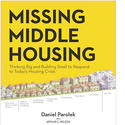Former V.P. Joe Biden’s climate policies and the litigation and regulation grandiloquence are toward the energy industry that was virtually non-existent before 1900. Today, America has only about four percent of the world’s population (330 million vs. 8 billion). read more »
Urban Issues
Biden's Quote: "We're Not Getting rid of fossil fules for a long time, probably 2050"
- Login to post comments
The Roots of California's Tattered Economy Were Planted Long Before the Coronavirus Arrived
California is in far worse shape economically than the great majority of other states also struggling through the pandemic. COVID-19 may be the primary cause of our current distress, but the evolving structure of our economy has exacerbated this calamity. The worst part is our state leaders should have known this all along. read more »
- Login to post comments
Escape from New York?
Reports continue to mount on the decline of New York City through the pandemic months. In a July 2020 post, we summarized the situation: read more »
- Login to post comments
Urban Reform Institute Releases Report on Upward Mobility
In a new report, Upward Mobility, Charles Blain, Wendell Cox and Joel Kotkin examine examine housing costs, patterns of domestic migration and how they affect upward mobility for middle and working-class citizens, especially historically disadvantage minorities. An excerpt from the report follows below: read more »
- Login to post comments
The Riot Ideology, Reborn — excerpted from 'The Crisis of Liberalism: Prelude to Trump
In the summer of 1966, Attorney General Nicholas Katzenbach warned that there would be riots by angry, poor minority residents in “30 or 40” American cities if Congress didn’t pass President Lyndon Johnson’s Model Cities antipoverty legislation. read more »
- Login to post comments
Poor City, Rich Suburb: A Defining Characteristic of the Rust Belt
We all know that for decades the suburbia narrative was one of homogenized, sprawled and insulated wealth separated from diverse, dense and isolated poverty. We also know that's changed dramatically over the last 30-40 years. But that distinction really first became codified in the development patterns of cities that boomed in the late 19th/early 20th century: coincidentally, when Rust Belt cities boomed. read more »
- Login to post comments
Congress Extends Pork Another Year
In a move that will surprise no one at all, Congress has extended federal funding for highways and public transit until September 30, 2021. Such federal funding was set to end on September 30, 2020, and rather than revise the law to take into account the latest trends and events, Congress simply extended the existing law for another year. read more »
- Login to post comments
The Coronavirus Reopened America's Wounds — and Poured Salt in Them
Yes, the coronavirus hit the president and his White House hard, likely because of the irresponsible choices this president has made, but let’s not kid ourselves: The virus has devastated with alarming efficiency minorities and the impoverished, particularly in cities, while accelerating our return to a more hierarchical and far le read more »
- Login to post comments
Blade Runner Meets Old Testament
I took these photos at midday as I went about my usual chores. The forest fires that have been burning across California sent ash over San Francisco turning the sky a freakish shade of orange. read more »
- Login to post comments
Missing Middle Housing — Book Review
“Missing Middle Housing – Thinking Big and Building Small to Respond to Today’s Housing Crisis” by Daniel Parolek
Book Review by Adam Mayer
California State Senate Bill 1120 (SB 1120), a bill that would’ve permitted duplexes on land zoned for single-family residences across the state, died abruptly at the 11th hour back in August read more »
- Login to post comments






















